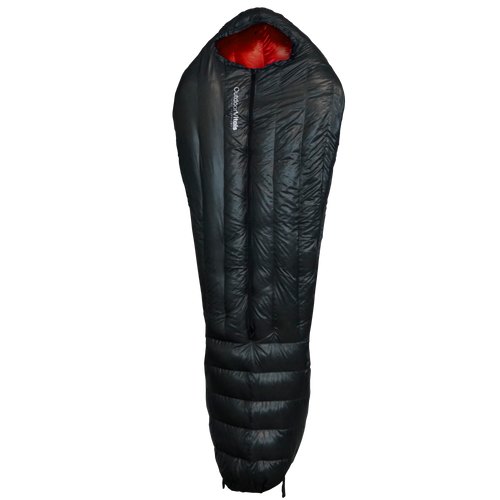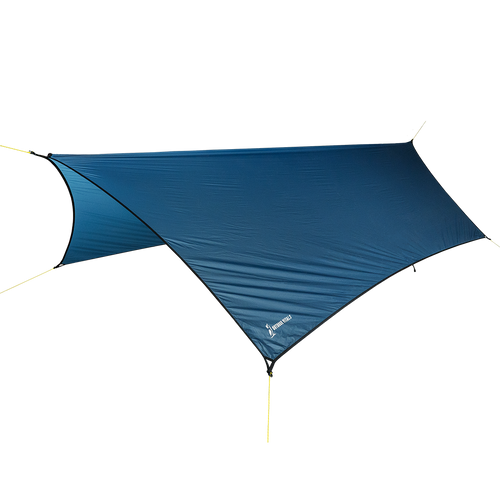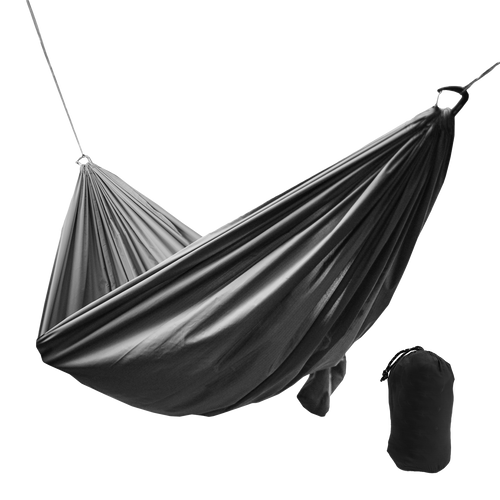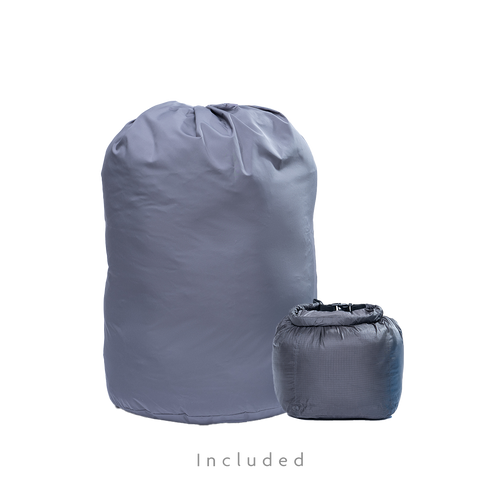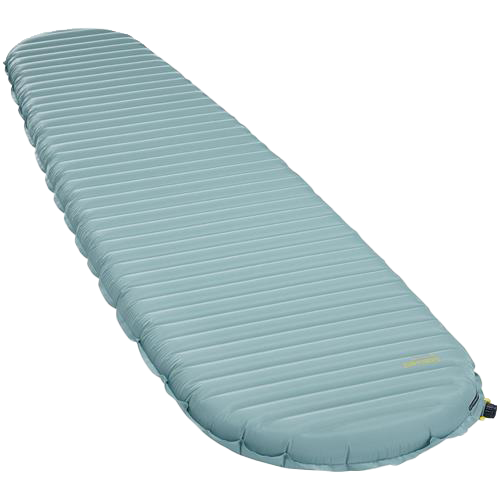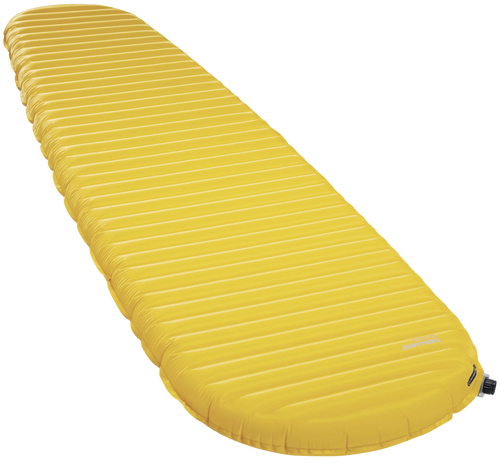You've Been Lied To About Sleeping Pads (Understanding Sleeping Pad Warmth & the ASTM R-Value Standard)
Last fall we were out on a backpacking trip in the backcountry of Zion National Park with a few friends. The views were amazing, the company was enjoyable, & for the most part - our gear was performing well.
But then at night temperatures dropped SIGNIFICANTLY
Most of the team slept well enough, but there was one friend that got particularly cold at night. She said that she felt cold from underneath all night long & that her sleeping pad must not have been warm enough. (for more information about why sleeping pads rather than sleeping bags are usually the culprit for making you feel cold, click here.)
The strangest part was that her pad was rated with an R-value of 5 and the rest of us were on pads with just a 3.5 R-value!
What is R-Value?
Sleeping pads are not typically given temperature ratings. Instead, they are given R-value ratings.
R-value is basically the measure of an insulation's thermal resistance, or how well it stops heat flow. Think about it as a heat-resistance value.
The higher the R-value, the better an insulation or insulated sleeping pad is at insulating.
Most credible gear brands with sleeping pads will list the R-value of their pads in the specs section of their websites. It should be a big consideration for you while shopping for a new pad. You want to make sure you have a pad that will keep you warm enough.
So why was my friend so cold on a pad with a higher R-value while the rest of us felt fine?
Standardized Rating Systems
Just a couple of years ago, a number of bigger brands in the outdoor industry got together with the American Society for Testing & Materials (ASTM) to establish a standard for giving an R-value rating to sleeping pads.
You see, before then every company had been rating their pads according to their own systems!
There was no good way to actually compare R-values on pads from different brands since they were using different systems.
It was a mess.
But once the ASTM F3340 standard was established, outdoors enthusiasts were given the ability to REALLY know how warm a pad is compared to other sleeping pads.
Sleeping pads that have an official ASTM F3340 R-value rating have undergone the same heat tests using exactly the same methods - allowing you to truly make a more informed decision on what you need.
The ASTM F3340 Standard
So what is this standard for R-value testing?
Brands will send their sleeping pads to verified facilities to be tested. These facilities will press the pad between 2 large plates: a hot plate, and a cold plate. These plates are set up to measure the amount of heat that passes through the pad to the other side - thus determining the R-value or resistance to heat flow rating.
This same process is used whether a pad is inflatable or not.
If you are at all concerned about whether or not your sleeping pad will be warm enough for an upcoming adventure, I HIGHLY recommend making sure it was rating according to this Standard.
What R-Value do you need?
With this new standard, it's a lot easier to match up the right pad with the types of conditions you expect to be out in.
- An R-value below 2 is really only good enough for warm summer nights.
- An R-value between 2 and 4 could be considered a 3 season pad (spring, summer, fall.)
- An R-value between 4 and 6 could be used as an all-season pad except in extreme conditions.
- Lastly a sleeping pad with an R-value above 6 would be considered good for extreme cold conditions.
My friend had a pad that she got 5 years ago. But because that was before R-value ratings were standardized, her 5 R-value just wasn't accurate.
Others in our group had sleeping pads that only had a 3.5 R-value rating, and we slept soundly and warmly. Our pads were rated according to the new ASTM F3340 standard.
The pad the rest of us were using is the new Oblivion Sleeping Pad. It's actually quite impressive. Not only did it keep us warm during an unexpected October snow storm, but it is COMFY!

The Oblivion Sleeping Pad uses 3 inch thick tufted I-beam cushioning to keep your shoulders & hips off the ground - even if you're a side sleeper!
It was built specifically with comfort in mind, and it does a great job!
It's lightweight, comfortable, & warm with an R-value of 3.5 (ASTM F3340 Standard). That rating makes it the perfect pad to get better sleep in the backcountry spring, summer, & fall.
But what if you wanted to use it during the winter or on colder trips?
What I'm about to share next is a bit of a life hack!
A warmer sleeping pad is also usually a bit more expensive and heavy or bulky. So what's a good way to make your current pad's insulating ability stretch a bit?
The answer is to supplement your sleeping pad's warmth with some additional ultralight insulation.

1/8th inch closed cell foam pads will not only keep your main inflatable sleeping pad from sliding around your tent floor, but they will add a bit if insulating value to it as well!
I've found that by laying 2 of those 1/8th inch closed cell foam pads (only about 2 oz or so each) underneath my main sleeping pad, I've been able to stay totally comfortable even in sub-zero degree temperatures!
Another great reason to bring these thin foam pads along is that they work as great sit pads as well. When you're not trying to sleep, they are a lot more comfortable to sit on than the cold ground or a sharp rock!
The Takeaway
The biggest takeaway that I hope you get from all this is that it's worthwhile to do your homework when searching for a new sleeping pad. Not all R-values are created equally UNLESS they are given through the standardized ASTM F3340 procedures.
If a company or brand can verify that their stated R-values are contrived through that test, you'll be able to feel fairly confident in the sleeping pad's insulating ability.
Don't listen to any lies about your sleeping pad. Do your research, and we'll see you on the trail!
1 comment
Thank you in a huge, bearhug kind of way; I’ve been trying to gear up for my first of many Winter pack trips in the NC mountains. It’s been chaos finding a replacement pad for the first, original Therma-rest, Orange self inflating pad from the 1970s; had it salted away for several decades.
While looking for gear and researching what I need your Outdoor Vitals blog appeared. It’s a welcomed read learning I’m in dire need of a R-5 pad and will be including twin closed cell layers also.
Yes, my Therma-Rest pad still works even after renewing that original valve. And is the Long version.

